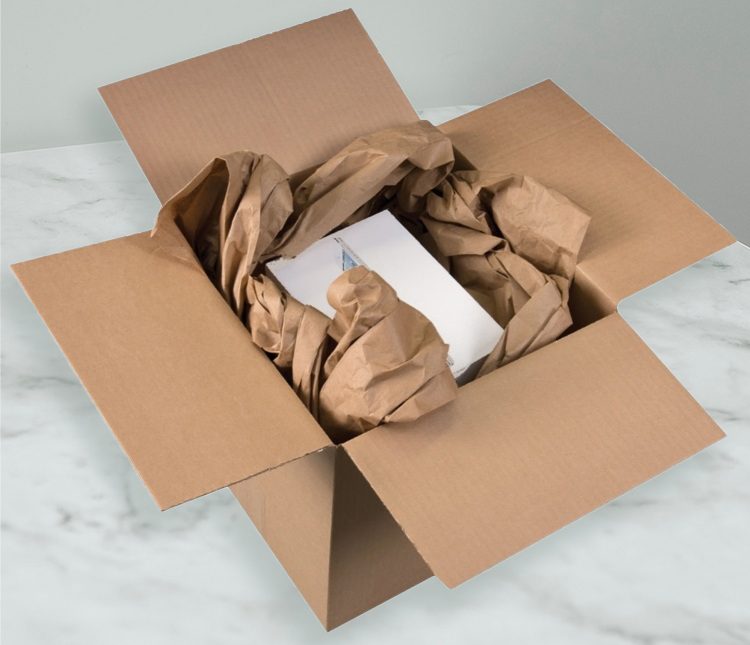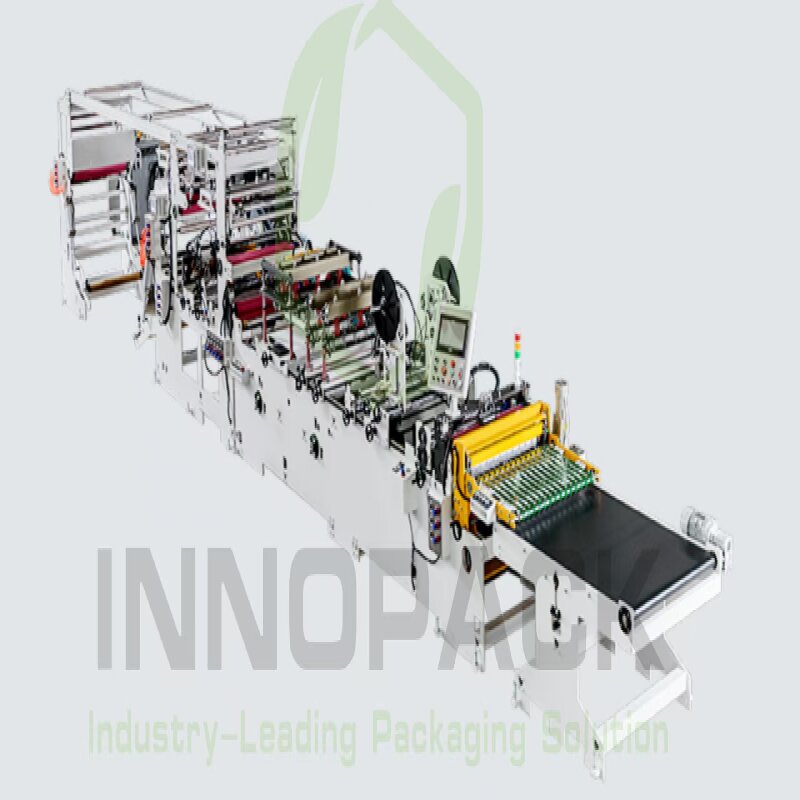ការវេចខ្ចប់ក្រដាសភាគច្រើនអាចបំប្លែងសារជាតិបាន៖ វត្ថុធាតុដើមដែលមានជាតិសរសៃរុក្ខជាតិបំបែកដោយធម្មជាតិ កែច្នៃឡើងវិញបានយ៉ាងងាយស្រួល ហើយជាមួយនឹងការរចនា និងការបោះចោលដ៏ឆ្លាតវៃ ត្រឡប់ទៅបរិស្ថានវិញដោយសុវត្ថិភាព។
ក្រដាសមានអត្ថប្រយោជន៍នៃការមានមូលដ្ឋានលើជីវគីមី អាចបំបែកបាន និងអាចប្រើឡើងវិញបាន។ អត្ថប្រយោជន៍បីដងនោះហើយជាមូលហេតុដែលក្រដាសបានក្លាយជាជម្រើសឈានមុខគេសម្រាប់អ្នកផ្ញើសំបុត្រ ប្រអប់កាតុង និងរុំការពារនៅទូទាំងពាណិជ្ជកម្មអេឡិចត្រូនិក និងការលក់រាយ។ ទោះជាយ៉ាងនេះក្តី “ជីវៈអាចបំបែកបាន” មិនមែនជាការធានាលើភួយនោះទេ ពោលគឺថ្នាំកូត ទឹកថ្នាំ និងការបញ្ចប់ជីវិតក្នុងការគ្រប់គ្រងឥទ្ធិពលទាំងអស់។ មគ្គុទ្ទេសក៍នេះពន្យល់ពីអ្វីដែលធ្វើឱ្យការវេចខ្ចប់ក្រដាសខូច តើវាកើតឡើងលឿនប៉ុណ្ណា និងរបៀបដែលម៉ាកយីហោអាចបញ្ជាក់ដំណោះស្រាយដែលការពារផលិតផល និង ភពផែនដី។

អ្វីទៅដែលធ្វើឱ្យការវេចខ្ចប់ក្រដាសអាចបំបែកបាន?
- សរសៃសែលុយឡូស៖ ក្រដាសគឺជាសែលុយឡូសជាចម្បងពីឈើឬប្រភពកសិកម្ម។ មីក្រុបងាយរំលាយសែលុយឡូសទៅក្នុងទឹក CO2និងជីវម៉ាស។
- សារធាតុបន្ថែមតិចតួច៖ ជាតិសរសៃក្រដាសដែលមិនមានលាបពណ៌ ក្រឡោត និងផ្សិត ជាធម្មតារលួយយ៉ាងឆាប់រហ័សនៅក្នុងជីកំប៉ុស ឬដី។
- ជម្រើសរចនាមានសារៈសំខាន់៖ ជ័រទឹកដែលមានកម្លាំងសើម ខ្សែភាពយន្តផ្លាស្ទិច កម្រាលឈើ និងវ៉ារនីស UV ខ្លាំងអាចពន្យឺត ឬការពារការបំភាយជីវសាស្ត្រ។ ជ្រើសរើសទឹកថ្នាំដែលមានជាតិទឹក សារធាតុ adhesive ដែលមានមូលដ្ឋានលើរុក្ខជាតិ និងជៀសវាងការលាបថ្នាំផ្លាស្ទិច នៅពេលដែលការបំភាយជីវសាស្ត្រគឺជាគោលដៅ។
តើការវេចខ្ចប់ក្រដាសមិនប៉ះពាល់ដល់បរិស្ថានទេ?
វាអាចជា - នៅពេលបានបញ្ជាក់ និងគ្រប់គ្រងដោយការទទួលខុសត្រូវ។ ក្រដាសតម្រឹមល្អជាមួយរង្វង់មូល ព្រោះវាអាចកែច្នៃឡើងវិញបានយ៉ាងទូលំទូលាយ ហើយប្រសិនបើវាគេចផុតពីការកែច្នៃឡើងវិញ វាអាចបំប្លែងជីវជាតិបាន។ ដើម្បីបង្កើនប្រសិទ្ធភាពអេកូ៖
- ផ្តល់អាទិភាពដល់ការកែច្នៃឡើងវិញ៖ ប្រើការរចនាក្រដាសវត្ថុធាតុ mono ដោយមានសញ្ញា "កែច្នៃឡើងវិញ" ច្បាស់លាស់។ រក្សាខ្សែអាត់ និងស្លាកដែលមានមូលដ្ឋានលើក្រដាស។
- ទំហំស្តាំ៖ កាត់បន្ថយការបំភាយសម្ភារៈ និងការដឹកជញ្ជូនដោយការផ្គូផ្គងកញ្ចប់ទៅនឹងផលិតផល។
- ប្រភពដោយការទទួលខុសត្រូវ៖ ពេញចិត្តចំពោះជាតិសរសៃ និងម៉ាស៊ីនកិនស្រូវដែលមានការគ្រប់គ្រងទឹក/ថាមពលខ្លាំង។
- រចនាសម្រាប់ផ្លូវចុងក្រោយនៃជីវិតច្រើន៖ អាចកែច្នៃឡើងវិញបានមុនគេ ជីកំប៉ុសបាននៅពេលសមស្រប (ឧ. សំបកអាហារ)។
តើក្រដាសត្រូវចំណាយពេលប៉ុន្មានដើម្បីបំប្លែងជីវឧស្ម័ន?
ស៊ុមពេលវេលាប្រែប្រួលទៅតាមទម្រង់ និងលក្ខខណ្ឌ (សំណើម អុកស៊ីសែន សីតុណ្ហភាព និងសកម្មភាពអតិសុខុមប្រាណ)៖
- ក្រដាសស្តើង (ក្រដាស់កាសែត)៖ ~ 2-6 សប្តាហ៍ក្នុងជីកំប៉ុសសកម្ម។
- ប្រអប់សំបុត្រ Kraft & ក្រដាសបំពេញទទេ៖ ~ 4-8 សប្តាហ៍ក្រោមលក្ខខណ្ឌជីកំប៉ុស។
- ក្រដាសកាតុងធ្វើកេស (ជញ្ជាំងតែមួយ)៖ ~ 2-5 ខែអាស្រ័យលើកម្រាស់និងលក្ខខណ្ឌ។
- ក្រដាសស្រោប / ឡាមីណេតៈ ការបែកបាក់យូរ ឬមិនពេញលេញ ប្រសិនបើស្រទាប់ផ្លាស្ទិច ឬ foil នៅតែមាន។
ចំណាំ៖ "ជីវសាស្រ្តដែលអាចបំបែកបាន" ទាមទារលក្ខខណ្ឌសមស្រប។ នៅក្នុងកន្លែងចាក់សំរាមដែលមានអុកស៊ីហ្សែន និងសំណើមមានកម្រិត សម្ភារៈទាំងអស់—ក្រដាសដែលរួមបញ្ចូល — បន្ថយបន្តិចម្តងៗ។ ការកែច្នៃឡើងវិញនៅតែជាផ្លូវដែលពេញចិត្ត។
ក្រដាសធៀបនឹងផ្លាស្ទិច៖ ការដោះដូរក្នុងពិភពពិត
- ផលប៉ះពាល់សម្ភារៈ៖ ក្រដាសអាចកកើតឡើងវិញបាន ហើយជារឿយៗអាចកែច្នៃឡើងវិញបាន។ ផ្លាស្ទិចអាចស្រាលជាងមុនជាមួយនឹងការបញ្ចេញឧស្ម័នដឹកជញ្ជូនទាប។ ជ្រើសរើសដោយផ្អែកលើផលប៉ះពាល់សរុប (សម្ភារៈ + ការដឹកជញ្ជូន + ហានិភ័យនៃការខូចខាតផលិតផល) ។
- ចុងបញ្ចប់នៃជីវិត៖ លទ្ធភាពនៃការកែច្នៃឡើងវិញខ្ពស់របស់ក្រដាស និងការបំផ្លិចបំផ្លាញជីវសាស្ត្រធម្មជាតិផ្តល់នូវលទ្ធផលដ៏រឹងមាំនៅពេលដែលការទុកដាក់សំរាម ឬការចម្លងរោគកើតឡើង។
- ការការពារផលិតផល៖ សម្រាប់វត្ថុដែលផុយស្រួយ ខ្នើយក្រដាសដែលបង្កើតដោយវិស្វកម្មអាចកាត់បន្ថយការខូចខាត ដែលជារឿយៗជាកត្តាជំរុញបរិស្ថាន (និងការចំណាយ) ដ៏ធំបំផុត។
ការធ្វើមាត្រដ្ឋានការវេចខ្ចប់ក្រដាសប្រកបដោយនិរន្តរភាពសម្រាប់ពាណិជ្ជកម្មអេឡិចត្រូនិក
ស្វ័យប្រវត្តិកម្មជួយក្រុមផលិតកញ្ចប់ដែលមានទំហំត្រឹមត្រូវតាមល្បឿន។ គ្រឿងម៉ាស៊ីន innopack ផ្តល់នូវដំណោះស្រាយឧស្សាហកម្មដែលបង្កើនលំហូរ និងកាត់បន្ថយកាកសំណល់។ របស់ពួកគេ។ ម៉ាស៊ីនវេចខ្ចប់ក្រដាស អាចបង្កើតអ្នកផ្ញើសំបុត្រ ថាស រុំ និងការបំពេញទុកជាមោឃៈតាមតម្រូវការ ដើម្បីផ្គូផ្គងភាពចម្រុះ SKU ខណៈពេលដែលកាត់បន្ថយសម្ភារៈ និងទម្ងន់វិមាត្រ។
អត្ថប្រយោជន៍នៃការវេចខ្ចប់ក្រដាសដោយស្វ័យប្រវត្តិ
- មាត្រដ្ឋានត្រឹមត្រូវ៖ ការចាត់ទុកជាមោឃៈតិចមានន័យថាសម្ភារៈតិចជាងមុន និងតម្លៃដឹកជញ្ជូនទាប។
- ភាពស្របគ្នា៖ ផ្នត់ដែលអាចផ្នត់បាន ការផ្សាភ្ជាប់ និងស្រោមខ្នើយធ្វើអោយប្រសើរឡើងនូវការការពារ និងកាត់បន្ថយការត្រឡប់មកវិញ។
- ល្បឿន និងប្រសិទ្ធភាពការងារ៖ មតិព័ត៌មានដោយស្វ័យប្រវត្តិ និងប្រព័ន្ធកាត់ទៅប្រវែងបង្កើនការវេចខ្ចប់ក្នុងមួយម៉ោង។
- ទិន្នន័យ និងការគ្រប់គ្រង៖ រូបមន្តស្ដង់ដារនៅទូទាំងបន្ទាត់ជួយសម្រួលដល់ការធ្វើសវនកម្ម និងការរាយការណ៍អំពីនិរន្តរភាព។
បញ្ជីត្រួតពិនិត្យជាក់លាក់សម្រាប់ការវេចខ្ចប់ក្រដាសដែលអាចបំបែកបាន
- សម្ភារៈ៖ kraft/corrugated ដែលមិនស្រោប ឬស្រោបស្រាល; ជៀសវាងការប្រើបន្ទះប្លាស្ទិក ប្រសិនបើតម្រូវឱ្យមានជីវគីមី។
- សារធាតុស្អិត និងទឹកថ្នាំ៖ ទឹកដែលមានមូលដ្ឋានលើ VOC ទាប និងអាចប្រើបានជាមួយស្ទ្រីមកែច្នៃ/ជីកំប៉ុស។
- កម្លាំងធៀបនឹងម៉ាស់៖ ជ្រើសរើសថ្នាក់ក្តារទាបបំផុតដែលនៅតែការពារការខូចខាតក្នុងពេលឆ្លងកាត់។
- ការរចនាសម្រាប់ការរុះរើ៖ ទម្រង់សម្រាប់តែក្រដាស ឬសមាសធាតុដែលអាចបំបែកបានយ៉ាងច្បាស់។
- ការដាក់ស្លាក៖ ការណែនាំសាមញ្ញ "កែច្នៃឡើងវិញ" ឬ "ជីកំប៉ុសដែលជាកន្លែងដែលទទួលយក" ការណែនាំដើម្បីកាត់បន្ថយការភាន់ច្រលំរបស់អ្នកប្រើប្រាស់។
សំណួរគេសួរញឹកញាប់
តើការវេចខ្ចប់ក្រដាសមិនប៉ះពាល់ដល់បរិស្ថានទេ?
បាទ/ចាស—នៅពេលដែលមានប្រភពទំនួលខុសត្រូវ ទំហំត្រឹមត្រូវ និងរក្សាទុកសម្ភារៈ mono-material។ ការកែច្នៃឡើងវិញ និងការបំប្លែងជីវតាមធម្មជាតិរបស់វា ធ្វើឱ្យវាក្លាយជាជម្រើសរាងជារង្វង់ដ៏រឹងមាំសម្រាប់ SKUs ជាច្រើន។
តើក្រដាសត្រូវចំណាយពេលប៉ុន្មានដើម្បីបំប្លែងជីវឧស្ម័ន?
ពីពីរបីសប្តាហ៍សម្រាប់ក្រដាសស្តើងទៅពីរបីខែសម្រាប់ corrugated - លឿនជាងមុននៅក្នុងជីកំប៉ុសសកម្ម, យឺតនៅក្នុងស្ងួត, បរិស្ថានក្រីក្រអុកស៊ីសែន។
តើក្រដាសអាចជំនួសផ្លាស្ទិចបានគ្រប់ករណីទេ?
មិនមែនជានិច្ចទេ។ តម្រូវការវត្ថុធាតុរាវ ជាតិខាញ់ ឬរបាំងខ្ពស់អាចត្រូវការថ្នាំកូត ឬសម្ភារៈជំនួស។ ប្រើការគិតអំពីវដ្តជីវិត ដើម្បីជ្រើសរើសជម្រើសដ៏ល្អបំផុតក្នុងមួយ SKU ។
បន្ទាត់ខាងក្រោម
ការវេចខ្ចប់ក្រដាសគឺជាមូលដ្ឋាន ផ្អែកលើជីវគីមី ដែលអាចបំបែកបាន និងអាចកែច្នៃឡើងវិញបាន។ផ្តល់នូវការអនុវត្តបរិស្ថានដ៏រឹងមាំនៅពេលដែលបានបញ្ជាក់ដោយគិតគូរ និងដោះស្រាយបានត្រឹមត្រូវនៅចុងបញ្ចប់នៃជីវិត។ សម្រាប់ម៉ាកដែលធ្វើមាត្រដ្ឋានពាណិជ្ជកម្មតាមអេឡិចត្រូនិក រួមបញ្ចូលគ្នានូវសម្ភារៈដែលឆ្លាតវៃជាងមុនជាមួយនឹងស្វ័យប្រវត្តិកម្ម ដូចជា គ្រឿងម៉ាស៊ីន innopack និងរបស់វា។ ម៉ាស៊ីនវេចខ្ចប់ក្រដាស-អាចកាត់បន្ថយថ្លៃដើម កែលម្អការការពារ និងពន្លឿនផែនទីបង្ហាញផ្លូវប្រកបដោយនិរន្តរភាពរបស់អ្នក។






